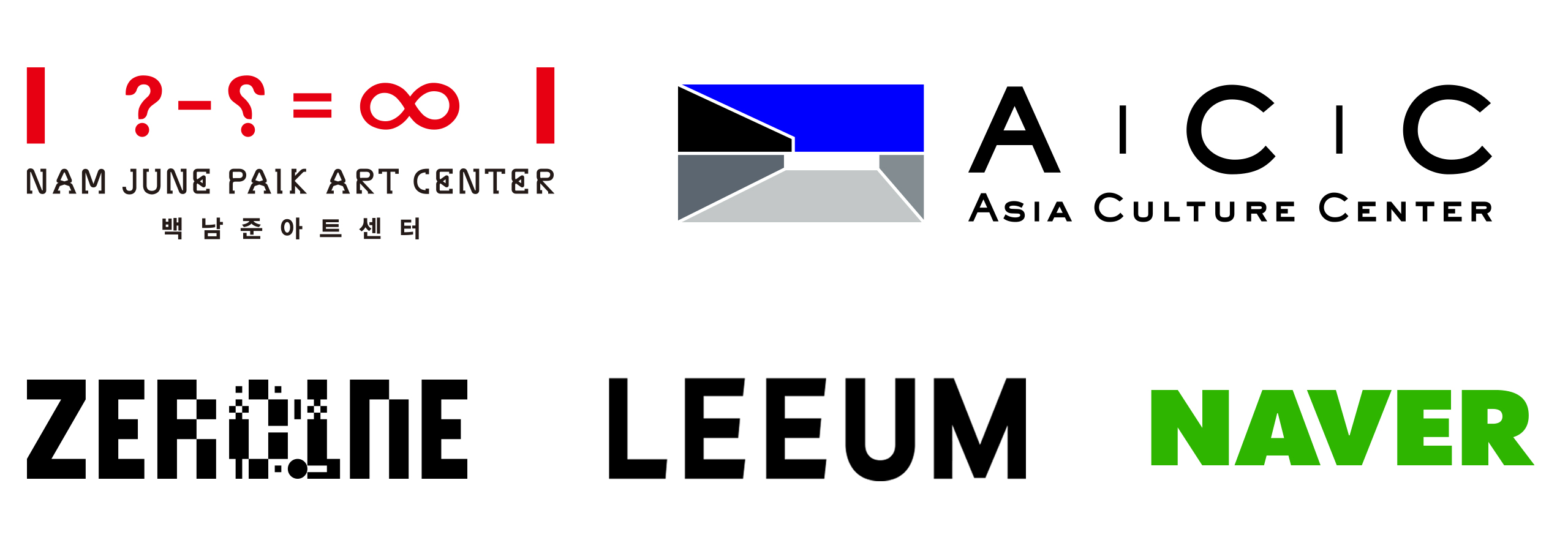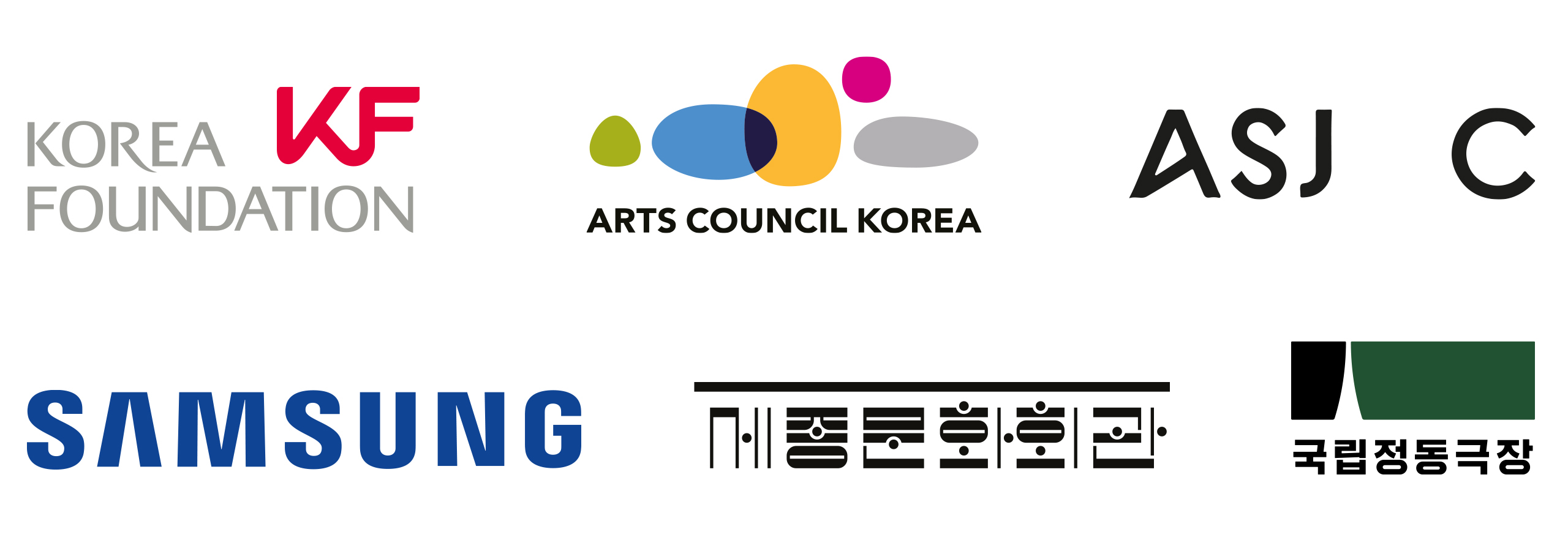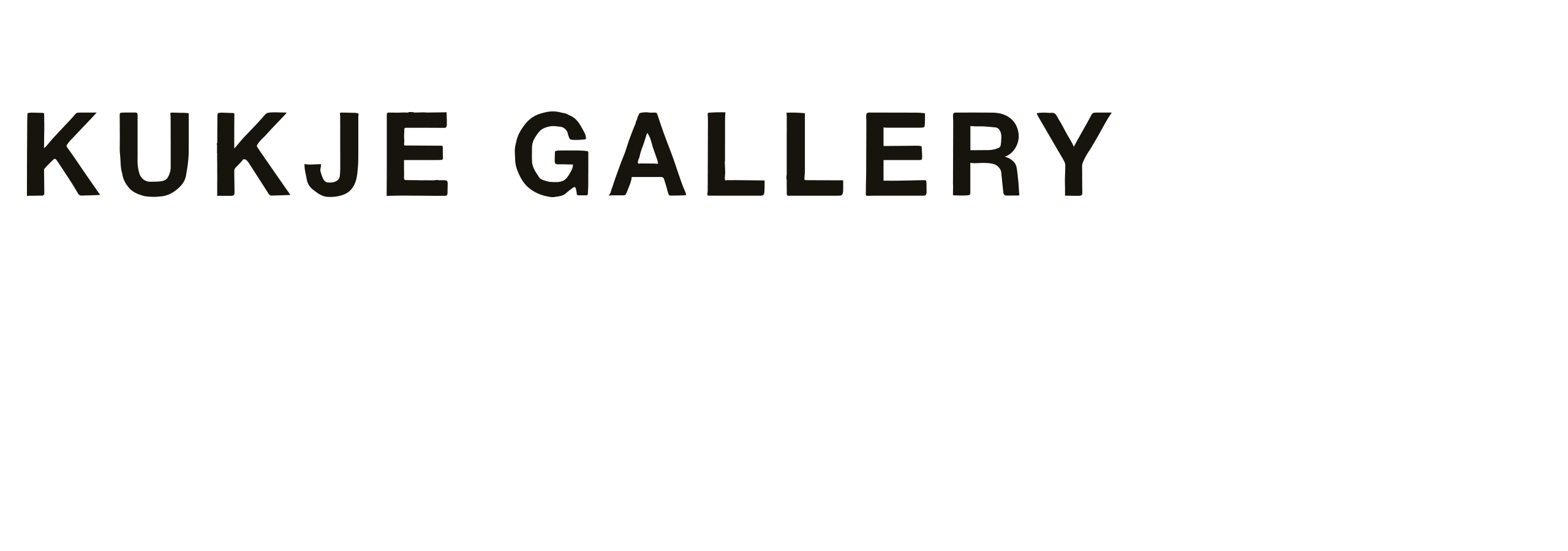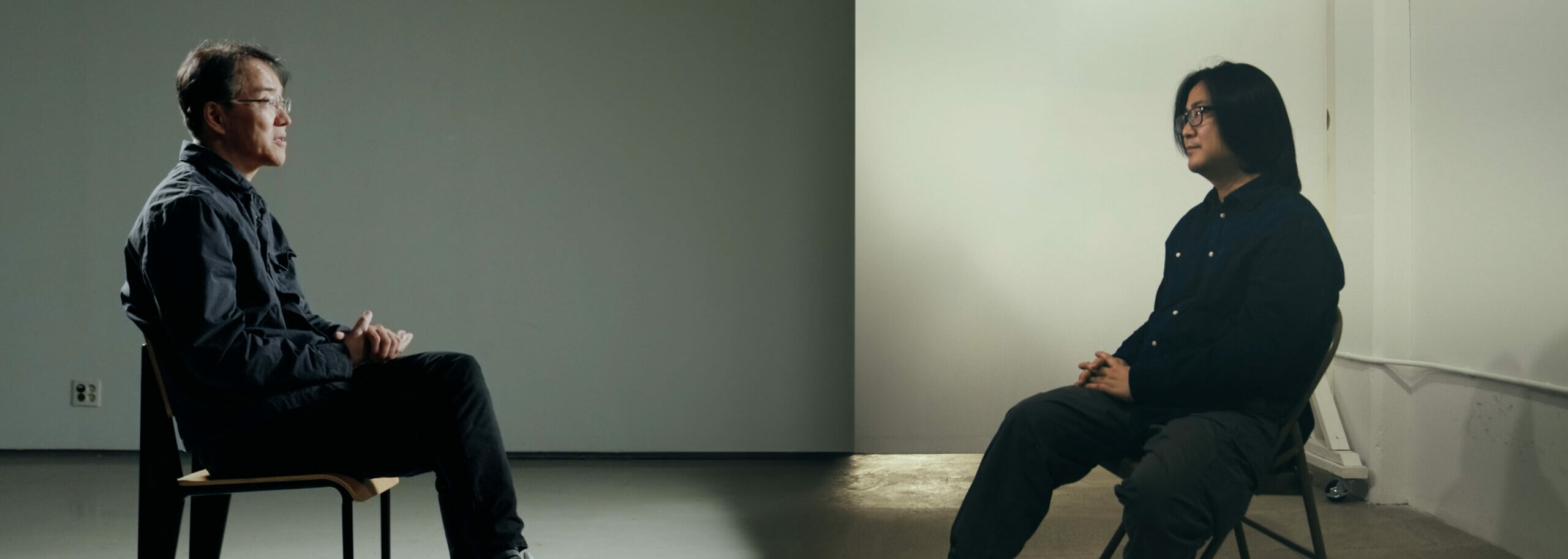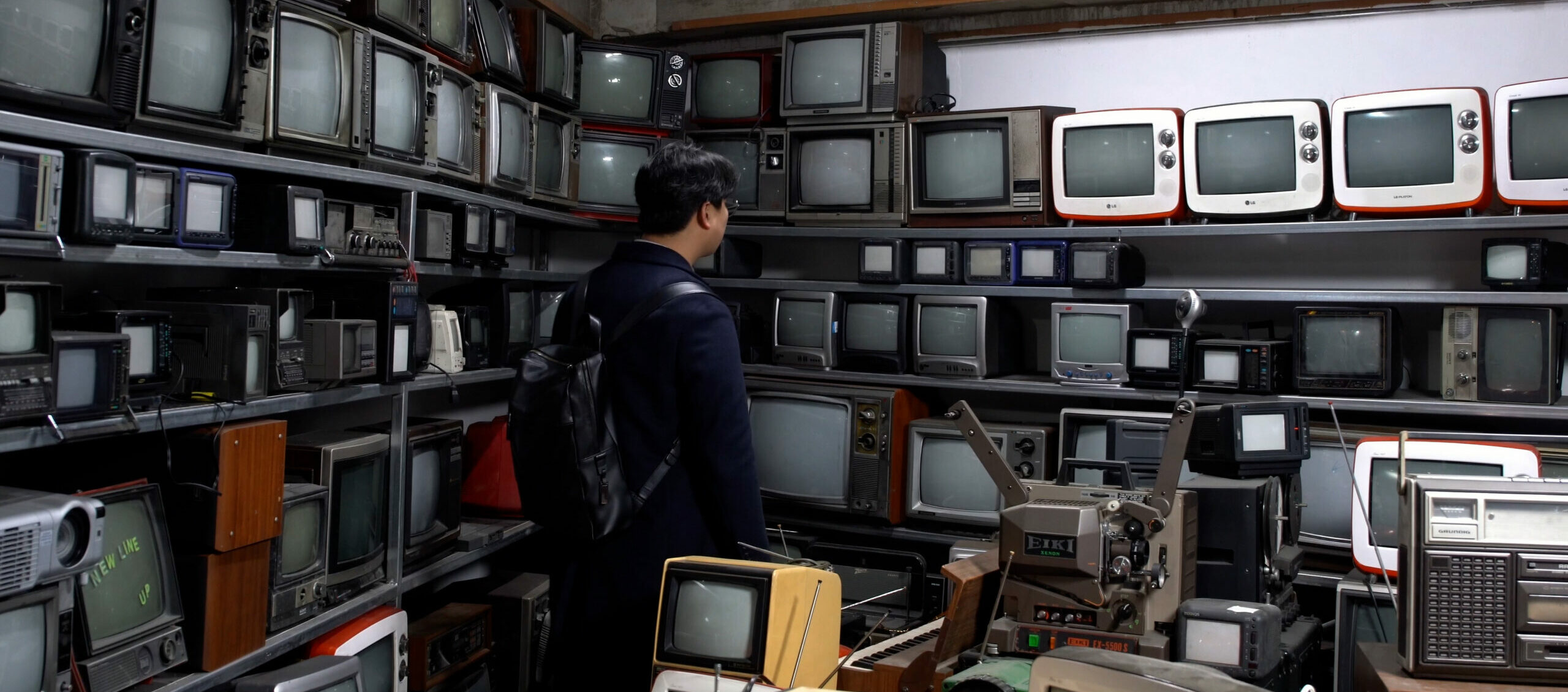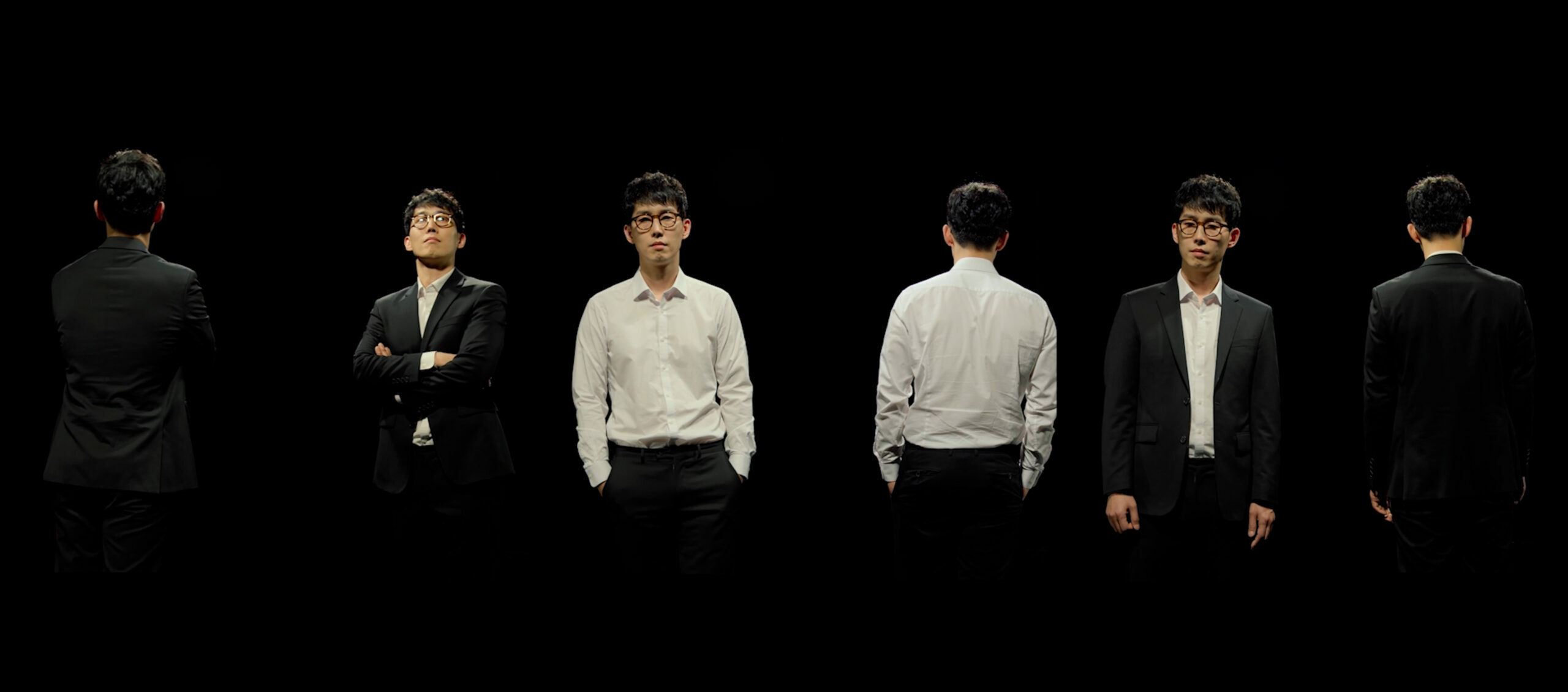SHIN Kiwoun: Hello, Mr. Woo! Meeting you at a distance, even though we’re actually quite close, is really exciting and a pleasure for me.
WOO Jongduk: It’s a pleasure for me, too. While I was on my way here this morning, a thought crossed my mind. When Nam June Paik put together the Good Morning, Mr. Orwell broadcast in 1984, he became much better known in Korea. That was when I first learned about him, too. The kind of work that he struggled to create back then can now be done very simply with computers and the internet. I’m able to see someone in New York right from here, it’s really quite astonishing. It’s become such an ordinary thing. But for all that, it’s actually even more of a pleasure, when I think about you being farther away than when I saw you here. It’s truly a meaningful encounter.
SHIN Kiwoun: I watched Good Morning, Mr. Orwell on KBS when I was quite young, and I didn’t grasp its significance. It’s something we all recognize now, and it’s what we’re using right now for this interview. So, in that sense, I consider it truly meaningful.
WOO Jongduk: One of the things that Paik said, something he talked about in the 1970s, was called the “information superhighway.” When I first heard about it, I couldn’t figure out what he was talking about. By the 1990s, when the internet really began advancing, and we began exchanging information and videos online, it dawned on me that he had envisioned the future of the internet. I think about that sometimes when I use the internet.
SHIN Kiwoun: The reason for our conversation today is your involvement with The More, the Better. In my case, I was doing some technical consulting-related work for the restoration. So I spent over two years wrestling with certain issues, and you were also involved in related work. Although The More, the Better appears to be functioning well at the moment, your work stems from certain concerns that will come up based on its past history. I’m curious to hear if there was anything you couldn’t accomplish with the work.
WOO Jongduk: These days, previously created artwork isn’t just being preserved. It’s continuously being updated with contemporary technology, and you have a lot of different contributors to give the work a new, modern quality allowing it to continue to live on. It’s something I’ve thought a lot about. When people talk about Paik, they often focus on him as an artist, but he also played a significant role in terms of bringing different people together. Seeing that, I got the impression that his artwork also embodies this aspect. So in my work, which I was doing long before the preservation and restoration was completed, I unfortunately wasn’t able to fully address this aspect, even though I really believe that it was one of the defining characteristics of Paik’s work.That is something I regret not addressing in my work.
SHIN Kiwoun: Paik is no longer with us today, but when you hear from the people who are still with us, his co-creators and contributors, their contributions should also be recognized. The works have survived, but these individuals should also be a part of the record. So while we remember the artwork itself, during the documentation process, there are many other people who took part in the creation alongside Paik, people whose contributions should have been documented, and I realized belatedly that I had overlooked them.
WOO Jongduk: Every time I look at The More, the Better as an artwork, I often have the same sense that you get looking at a monument, a Korean palace, or a tower, grand structures like these.Each time, I wonder about things like, “Who were the welders?” “Who installed each of these TV sets?” When you look at the cables at the back, they’re held together with what look like cable ties, and I’ve often wonder who did that. If you consider such details, The More, the Better involved many individuals who designed the structure, designed the monitors,and carried out all sorts of work on it. They should have been part of the archive, and I sensed how including such information could have greatly enriched the contextual understanding of the work.I’ve thought a lot about that, so I definitely know what you’re talking about.
SHIN Kiwoun: I’ve really come to appreciate how much of the work that’s being done today, contemporary artwork, is becoming part of the past. It’s what I’ve felt lately. The equipment and creations from my time as an active artist feel different when I turn them on or start them up these days, and that feeling seems to overlap somehow with Paik’s work. It gives me a new sense of how much of a burden it is to create work that anticipates technology and the future, and of whether it’s the work I should be doing. It’s been daunting for me. How is it for you?
WOO Jongduk: At some point, technology began to intersect with art, and because technology is a product of science, it inevitably continues developing. Today’s technology is becoming increasingly outdated. The media art of the past has transformed into “old media” and “new media” art. When I see things like that, I wonder how the material aspects of the machinery should be handled. In the minds of people today, whether it’s artists or especially the viewers who will be appreciating the art, I don’t think it’s a theme that can really have a unified understanding yet. Paik once said something that I often find myself thinking about. He said that the art that would endure in the future would be weightless in form. If art is weightless, that means it’s nothing but light. While I don’t know if this is why he worked in the video medium, it makes sense that if art exists as light, then the likelihood of it existing in data form is 100%.Perhaps this is what he had in mind. I have a question I wanted to ask you. During your two years of participating in the restoration, what stood out to you the most?
SHIN Kiwoun: The TVs using composite terminals and RCA terminals were the first thing I worked with on the project. So it was possible to anticipate what it would look like inside and outside. But when I actually looked inside the work, it was completely different. On the outside, it’s this enormous work, but it’s actually quite tight inside. I found that curious. I had this expectation, and in reality it was rather compact. Also, I was surprised to see air conditioning inside of it. It made sense, but it had this large air conditioner in it. When I saw that, it was like I’d seen something that should have been kept hidden. So that air conditioner left a lasting impression on me.
WOO Jongduk: In your view, what are some ways in which the significance of Paik’s work continues to be explored in contemporary discussions?
SHIN Kiwoun: We are all aware of his legacy and the possibilities he explored. The value of his contributions is immeasurable. The inventors of television or those who developed the camcorder obviously didn’t invent them as tools for making media art. However, as we all know, when Sony created the camcorder, he was the first person to buy one and to use it to create media art. As someone with that remarkable foresight, he’s once again showing us the kind of things that he showed us from many other perspectives. Though the people who develop technology and the people who use it may each have different visions, ultimately the results are unpredictable. In that sense, someone like Paik seems to have distilled the things we can all share and narrowed them down. The idea that new technologies, things like computers and electronics, should definitely be seen as part of media art is something we don’t question now. But during a time when this concept was questionable, he was bold enough to transform it into something that had to be reckoned with. To me, that’s his most significant contribution.
WOO Jongduk: In the 1960s, Paik created his TV Buddha. Looking at it now, his work spans the 1960s, the 1970s, the 1980s. The More, the Better is from the 1980s. And the work he created then continues to be remade and discussed by people today. What gives the work its enduring contemporary quality is that it prompts other artists, younger artists, and people in general to continue to think about the meaning of art, Paik’s intended message, and what it means to survive. It keeps posing those kinds of questions. To me, that’s another way in which Paik is significant.
SHIN Kiwoun: He’s always seemed to be a scholarly artist who anticipated the future, taking risks and presenting ideas. That’s how I’ve always felt about him. Thank you for your comments. It was a pleasure talking with you.



